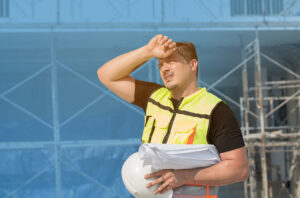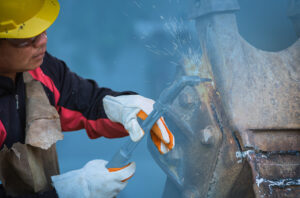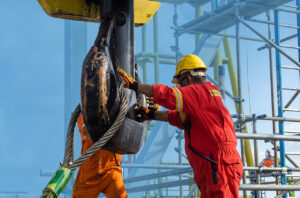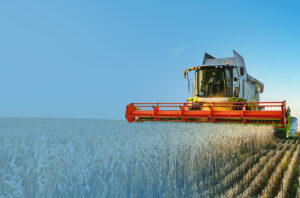Health and safety regulations require employers to assess risks and where necessary take action to reduce those risks, this includes the risks of slips and trips. Specific regulations require that, so far as is reasonably practicable, every floor and traffic route in a workplace should be kept free from obstructions and from any article or substance which may cause a person to slip, trip or fall.
Autumn and winter can be a higher risk time for slips and trips for a number of reasons. Depending on your location paths can become slippery due fallen leaves, mud and dirt and a build up of snow and ice during bad weather. Also having less daylight can make it harder for people to spot hazards.
Exactly what you need to do will depend on your individual circumstances, the following advice is intended as a general guide.
The first stage is always to assess the risk and put in place a plan for managing it. Where your workplace covers are large area or there are a number of routes it may not be practical to keep them all clear, so you will need to identify those priority routes and areas that are most heavily used or used by the most vulnerable groups.
Some common examples of high risk areas include building entrances, car parks, pedestrian walkways, shortcuts, sloped areas and areas constantly in the shade or wet.
The next stage is to take action to put your plan into practice, where possible this action should be directed to preventing the hazard from developing. Typically this will involve monitoring the weather forecast and taking action when freezing temperatures or snow are forecast.
In some cases the action you take may be to keep people away from potentially slippery surfaces, for example by putting out barriers and directing people to less slippery routes. You should remember to remove barriers once the risk has passed or people may start to ignore them.
In other cases you may want to take action to prevent ice from forming, often this involves spreading grit (typically “rock salt”) on affected areas. Salt can be used to prevent ice from forming or to melt snow and ice that has formed. If using salt to melt snow and ice, remember the effect is not instant.
It is generally recommended that grit is best applied early in evening before the frost settles and/or early in the morning before people arrive. However grit may not be effective if rain is expected as this can wash the salt away.
When if comes to clearing fallen snow there are a number of options available from manual shovelling to mechanical means and you should choose whichever is most practical for your circumstances. Be aware that it is easier to move fresh, loose snow rather than hard snow that has packed together from people walking on it. So if possible, start removing the snow and ice in the morning before most people arrive.
Generally you should not use warm water to clear ice and snow as this can refreeze forming a layer of ice making the surface more treacherous.
Snow and ice don’t just affect the outside, slips and trips can also occur at building entrances as people walk contamination into the building, simple steps such as having suitable entrance matting in place can help reduce the risk.
Longer term measures can include considering the type of floor surface in high risk areas, having canopies at building entrances and covering walkways with arbours and making sure there is adequate lighting.
Guidance for private individuals clearing snow and ice can be found on the GOV.UK website at https://www.gov.uk/clear-snow-road-path-cycleway and on the Met Office website at: https://www.metoffice.gov.uk/weather/warnings-and-advice/seasonal-advice/your-home/clearing-paths-and-driveways
Our specialists can help you to develop a bad weather plan for your premises. Please speak to your normal PIB Risk Management contact or get in touch using [email protected] if you have any questions.

The Sun’s Out – Time To Get The Shorts Out?

Updated Gas Safety Guidance

Revised Bloodborne Viruses Guidance

New High Consequence Infectious Disease Guidance for Care Providers

New Guidance On The Safe Rigging Of Cranes
